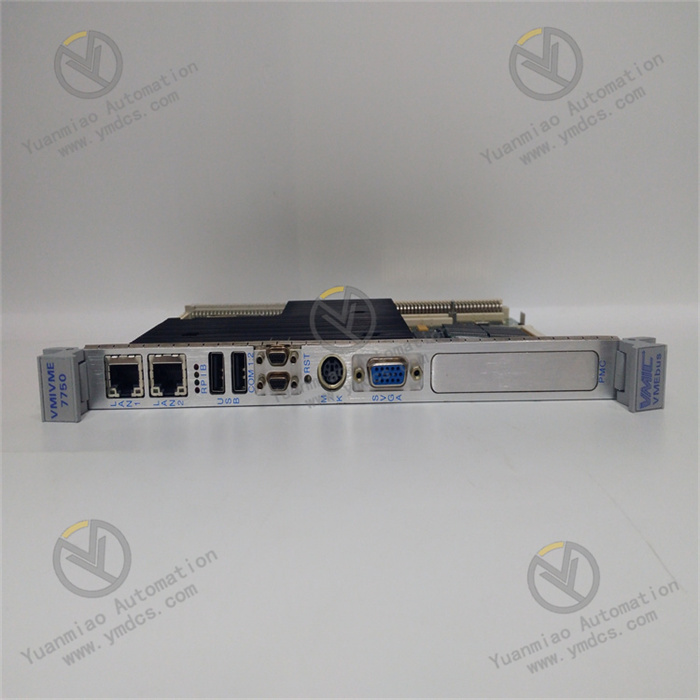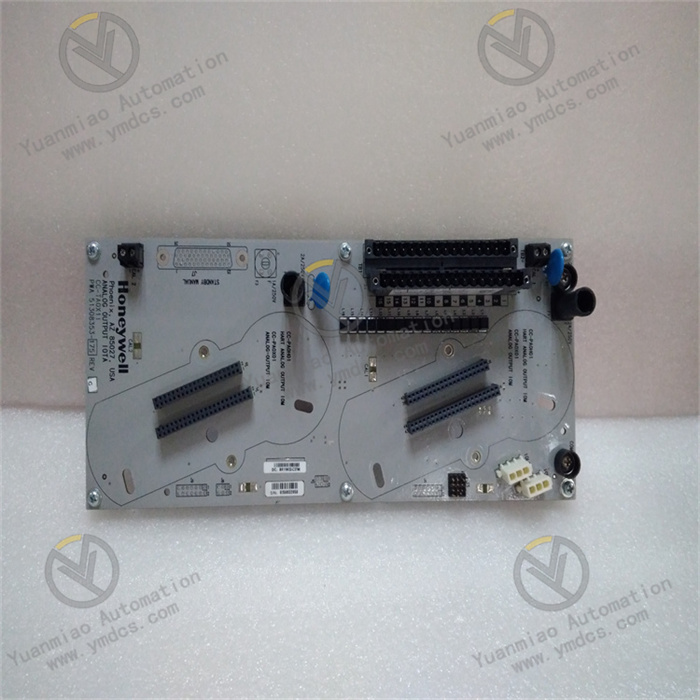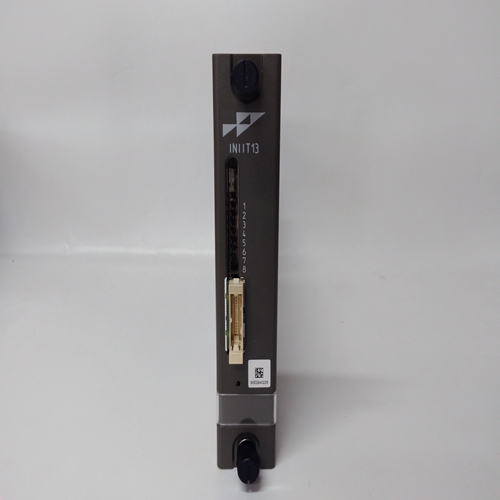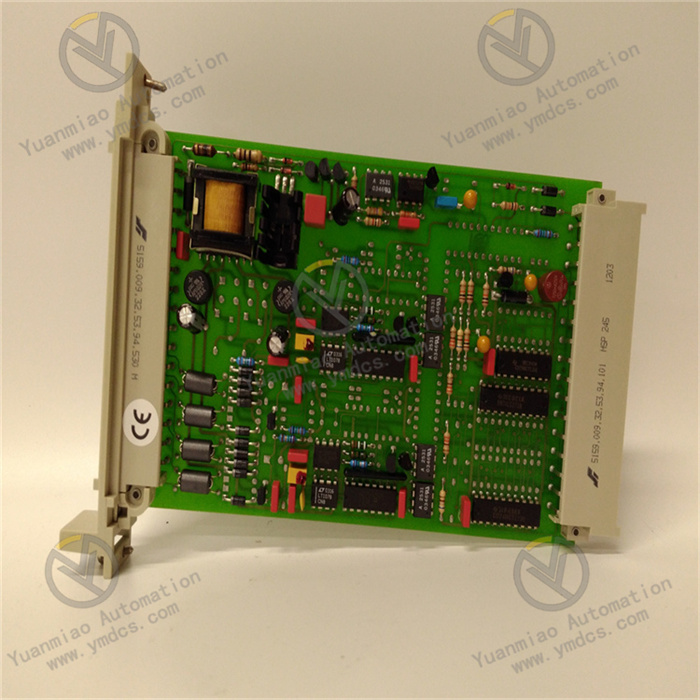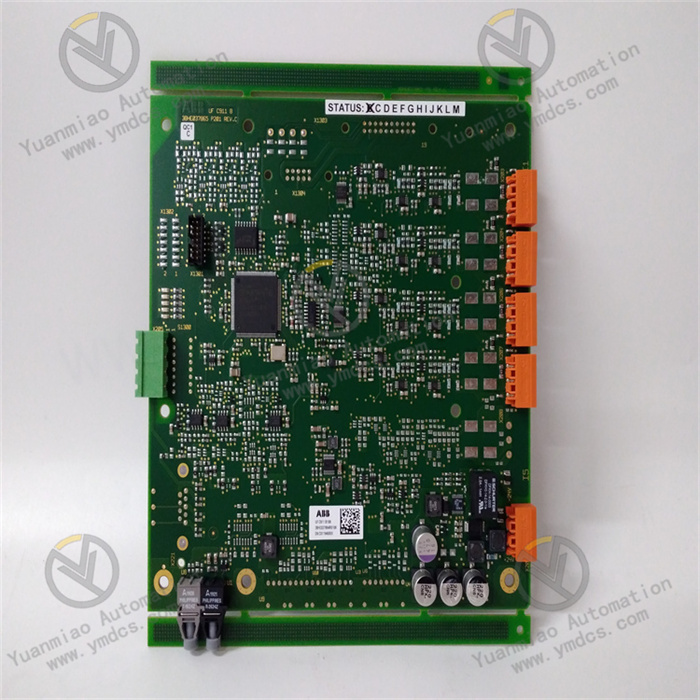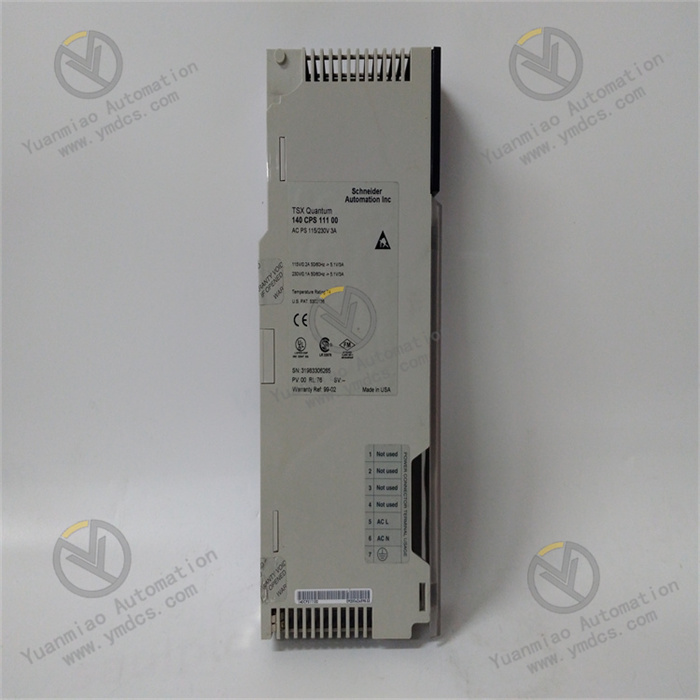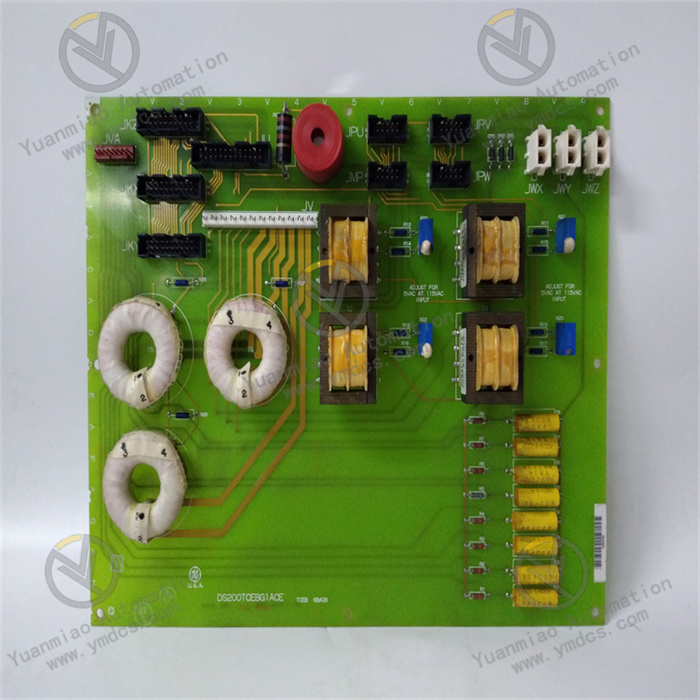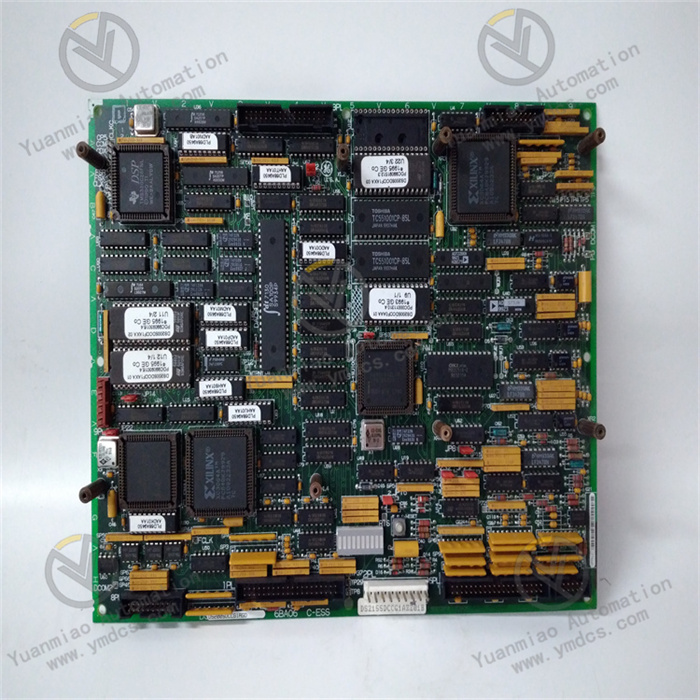Description
DS215SLCCG1AZZ01A
I. Overview
GE DS215SLCCG1AZZ01A is a LAN communication card specially developed by General Electric (GE) for the Mark V series control boards. As a crucial part of the turbine control system, the Mark V series is widely applied in management and control systems for automation drive components of wind, steam, and gas turbines. Although this series is now an obsolete legacy product and has been out of production for years since GE's initial release, it remains highly regarded due to its adoption of the patented Speedtronic control system technology. This technology first debuted with the launch of the Mark I series in the mid-to-late 1960s.
DS215SLCCG1AZZ01A optimizes the performance specifications and dimensions of the basic version through Class A functional product revisions and optional software packages. It manifests uniqueness as a special mainboard component, distinguishing itself from smaller card products in the ordinary Mark V series.
II. Functional Features
- High-efficiency Communication Capability: Supports multiple communication protocols, integrates isolated and non-isolated circuits on-board, executes LAN communication, and connects with local networks such as DLAN and Arcnet. It ensures fast and precise data transmission in complex industrial environments, enabling efficient data interaction with other devices or systems.
- Excellent Environmental Adaptability: Equipped with a standard PCB coating, it effectively resists environmental interference to ensure stable device operation in harsh conditions. With an operating temperature range of -40°C to +70°C, it adapts to severe environments across different regions and working conditions.
- Convenient System Integration: Powered by 24V DC and installed via DIN rail, it easily integrates into existing systems, significantly simplifying system design and installation, reducing construction difficulties and costs, and enhancing overall system compatibility and stability.
- Reliable Safety Assurance: Surface mount technology ensures stable and reliable connections, further enhancing data transmission security. Built-in multiple safety functions—including data encryption, access control, and transmission verification—comprehensively protect data security and integrity during transmission, effectively preventing leakage and tampering.
- Powerful Data Processing and Storage: The board is equipped with a main microprocessor and system memory space. The Local Area Network Control Processor (LCP) plays a key role in relaying network communication data between the device and its accessories. LCP software is stored in two replaceable EPROM slots on-board, and a dedicated Random Access Memory (RAM) provides communication space for the processor and the device's drive control processor.
- Diverse Connection Interfaces: The communication card features multiple interfaces:
- 2PL provides power and terminal board connections.
- 3PL offers input positions for drive control cards.
- 10PL connects the LAN I/O terminal board to SLCC, providing input/output for DLAN and Arcnet signals.
- KPPL serves as a programming slot for module keyboards and boards, enabling users to access system parameters, perform diagnostics, and make settings via programming tools.
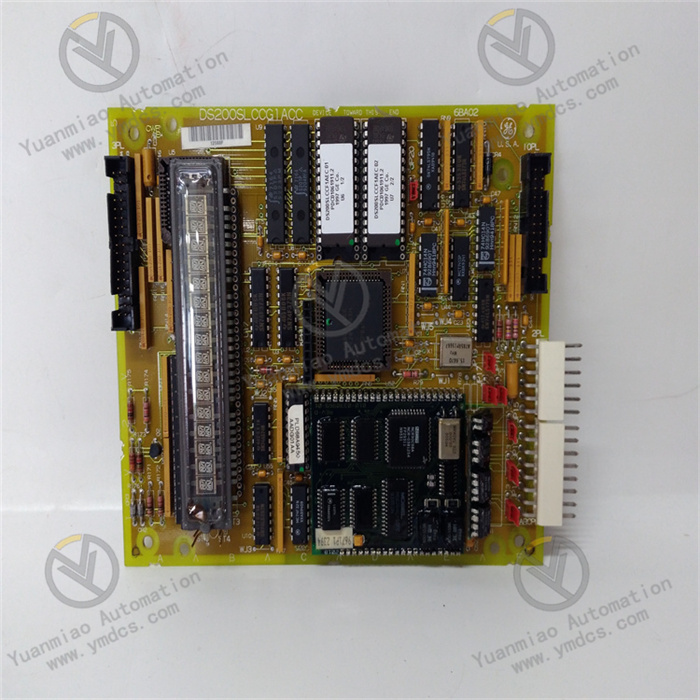
III. Technical Parameters
- Input Voltage: 24VDC, compatible with common DC power supplies to support stable device operation.
- Operating Temperature Range: -40°C to +70°C, demonstrating strong environmental adaptability for different working scenarios.
- Storage Temperature Range: -40°C to +85°C, ensuring reliability during storage in various temperature environments.
- Dimensions: (To be supplemented based on the actual product, not mentioned in the document). The compact design facilitates installation in control cabinets and equipment spaces.
- Weight: (To be supplemented based on the actual product, not mentioned in the document). Reasonable weight for easy installation and handling.
- Connectivity: Equipped with multiple interfaces for connecting different devices and networks (e.g., interfaces corresponding to 2PL, 3PL, 10PL, KPPL for specific network and control card connections).
- PCB Coating: Standard coating for effective circuit board protection.
- Functional Revision: Incorporates Class A functional product revisions, reflecting continuous functional improvements.
- Installation Method: DIN rail mounting, quick and easy to fix on standard rails.
- Technology Type: Surface mount technology, enhancing the reliability and stability of electronic component installation.
IV. Working Principle
During the operation of the entire control system, the Local Area Network Control Processor (LCP) of DS215SLCCG1AZZ01A plays a core role. When the device needs to interact with other systems, the LCP establishes connections with local networks such as DLAN and Arcnet via the board's isolated and non-isolated circuits. For example, in an industrial automation production line, sensors collect equipment operation data, which is transmitted to DS215SLCCG1AZZ01A in specific signal forms. The LCP processes the received signals, converts them into digital signals, packages and encodes the data according to preset communication protocols, and sends the processed data to target devices or systems via network interfaces. Conversely, when receiving data from other systems, the LCP decodes and verifies the data based on communication protocols to ensure accuracy and integrity, then transfers the processed data to other system components for subsequent processing. The board's main microprocessor and system memory space strongly support the LCP's efficient operation, ensuring smooth data processing and communication.
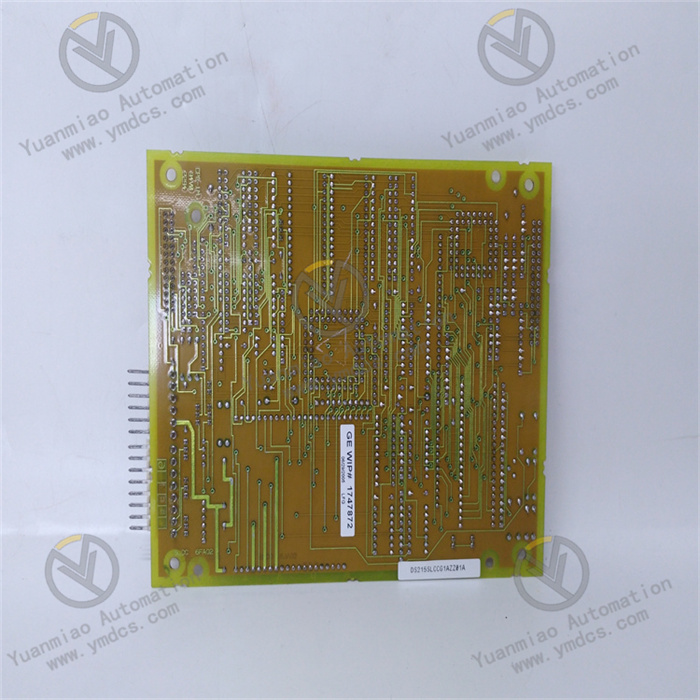
V. Common Faults and Solutions
- Abnormal Data Transmission
- Fault Phenomenon: Frequent data packet loss, transmission interruptions, or errors during communication with other systems.
- Solutions: First, comprehensively inspect communication lines for looseness, damage, or poor contact, and repair or replace them promptly. Then, carefully verify communication protocol settings, recheck compatibility with other devices, and adjust immediately if incorrect. If the issue persists, the module's communication interface may be faulty; test by replacing the communication interface module to identify and resolve the problem.
- Device Fails to Recognize Network
- Fault Phenomenon: The device cannot detect surrounding DLAN or Arcnet networks after startup, disabling communication.
- Solutions: Check the device's network configuration parameters (IP address, subnet mask, gateway, etc.) to ensure they match the network environment. Verify that network connection devices (switches, routers, etc.) are working normally and try restarting them. If unresolved, hardware failures (e.g., a damaged network chip) may exist, requiring professional maintenance or replacement.
- Device Overheating
- Fault Phenomenon: The casing temperature rises excessively after operation, possibly triggering overheat protection and causing performance degradation or shutdown.
- Solutions: Check the device's heat dissipation environment to ensure good ventilation and no debris blocking the channels. Verify that the cooling fan operates normally and replace it if faulty (e.g., stalled or abnormal speed). If the device runs under high load for extended periods, optimize system communication task allocation to adjust workload and reduce power consumption.



